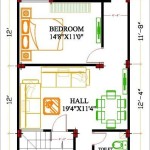Plans To Build A Tiny House: Comprehensive Guidelines & Indiana Code
The burgeoning popularity of tiny houses has fueled a growing interest in simplified living and sustainable construction practices. However, constructing a tiny house, especially one intended for permanent residency, requires careful planning and adherence to local regulations. This article provides a comprehensive guideline for individuals planning to build a tiny house in Indiana, focusing on relevant aspects of the Indiana Code and best practices for ensuring compliance.
Before embarking on any construction project, it is crucial to define what constitutes a "tiny house" within the context of Indiana regulations. While a universal definition remains elusive, generally, a tiny house is considered a small, independent dwelling, significantly smaller than a traditional house. The size thresholds and definitions are often determined by local zoning ordinances and building codes, creating variation across different Indiana counties and municipalities.
Prospective tiny house builders should begin by researching the specific zoning ordinances and building codes of their preferred location in Indiana. Contacting the local planning and zoning department is essential. This department can provide valuable information regarding minimum square footage requirements for dwellings, setbacks, height restrictions, and other factors that may impact a tiny house project. Understanding these regulations at the outset can prevent costly delays and ensure compliance throughout the construction process.
Failing to comply with local ordinances can result in fines, legal action, and even the forced removal of the structure. Therefore, thorough research and diligent adherence to regulations are paramount. The Indiana Code provides a framework for building regulations, but local municipalities often adopt more specific and stringent requirements. Always prioritize local regulations over general interpretations of the state code.
Key Consideration 1: Zoning Regulations & Minimum Square Footage
Zoning regulations play a critical role in determining where a tiny house can be located and how it can be used. Many residential zoning districts specify minimum square footage requirements for dwellings, which may preclude the construction of a tiny house as a primary residence on a traditional lot. Investigating accessory dwelling unit (ADU) regulations might be another viable option. An ADU is a smaller, independent dwelling located on the same lot as a primary residence. Some Indiana municipalities have adopted ADU ordinances that may be suitable for tiny houses, provided they meet specific criteria related to size, setbacks and utility connections.
Alternatively, exploring rural areas or counties with less restrictive zoning ordinances could provide more flexibility. However, even in less regulated areas, it is imperative to verify compliance with minimum safety standards and building codes. Another potential avenue is the development of tiny house communities, which are specifically designed and zoned to accommodate tiny houses. These communities often offer shared amenities and streamlined permitting processes, simplifying the construction and occupancy phases. In some cases, these communities may have their own set of community standards, so these standards must be carefully studied.
Furthermore, consider the zoning classification of the property. Different zoning classifications, such as agricultural, residential, or commercial, have varying regulations regarding permitted uses and building requirements. Understanding the zoning classification is essential for determining the feasibility of constructing a tiny house on a particular parcel of land.
Beyond square footage requirements, zoning regulations may also address issues such as parking, landscaping, and property maintenance. Adhering to these regulations is crucial for maintaining compliance and avoiding potential conflicts with neighbors or local authorities. Obtaining the zoning map and all applicable zoning code sections for the specific property under consideration is a prudent step.
Key Consideration 2: Building Codes & Safety Standards
In addition to zoning regulations, building codes establish minimum safety standards for construction, including structural integrity, fire safety, and electrical and plumbing systems. The Indiana Building Code is based on the International Building Code (IBC) and International Residential Code (IRC), but may incorporate amendments specific to Indiana. Builders must comply with the applicable edition of the Indiana Building Code when constructing a tiny house. Understanding the building code is crucial for ensuring the safety and longevity of the structure.
The IRC specifically addresses residential construction, including one- and two-family dwellings. This code covers a wide range of topics, including foundation design, framing, insulation, roofing, electrical wiring, plumbing, and mechanical systems. When constructing a tiny house, it is essential to comply with all relevant provisions of the IRC. For example, minimum ceiling heights, window sizes, and egress requirements must be met to ensure the safety and habitability of the dwelling.
Proper insulation is crucial for energy efficiency and comfort, especially in Indiana's climate. The building code specifies minimum insulation levels for walls, roofs, and floors. Ensuring adequate insulation can significantly reduce heating and cooling costs and improve the overall energy performance of the tiny house. Moreover, consider the use of sustainable and environmentally friendly building materials, which can further enhance the sustainability of the project.
Fire safety is another critical aspect of building code compliance. Smoke detectors are required in all sleeping areas and on each level of the dwelling. Fire-resistant materials should be used in construction, especially in areas such as kitchens and around heating appliances. Ensuring proper ventilation is also essential for maintaining indoor air quality and preventing moisture buildup, which can lead to mold growth.
Electrical and plumbing systems must be installed by qualified professionals and inspected by local authorities. Improperly installed electrical wiring can pose a fire hazard, while faulty plumbing can lead to water damage and health risks. Obtaining the necessary permits and inspections is essential for ensuring that these systems are installed correctly and in accordance with the building code.
Key Consideration 3: Indiana Code Requirements & Legal Considerations
The Indiana Code does not specifically define or regulate tiny houses as a distinct type of dwelling. Therefore, tiny houses are generally subject to the same building codes and zoning regulations as conventional houses. However, certain provisions of the Indiana Code may be relevant to tiny house construction, particularly those related to manufactured homes and recreational vehicles (RVs). If a tiny house is built on a chassis and designed to be easily moved, it may be classified as a manufactured home or RV, which are subject to different regulations.
Before commencing construction, it is advisable to consult with an attorney or legal professional familiar with Indiana property law and building regulations. An attorney can provide guidance on interpreting the Indiana Code and local ordinances and ensure that the tiny house project complies with all applicable legal requirements. This can help prevent potential legal disputes or enforcement actions later in the construction process.
Securing necessary permits and approvals is a critical step in the tiny house construction process. Depending on the location and the nature of the project, permits may be required for building construction, electrical wiring, plumbing, and septic systems. Failing to obtain the necessary permits can result in fines, delays, and even the forced removal of the structure.
It's vital to consider the long-term implications of owning a tiny house, including property taxes, insurance, and financing options. Property taxes are typically based on the assessed value of the land and the improvements on the land. Obtaining adequate insurance coverage is essential for protecting the investment in the tiny house and mitigating potential risks. Financing options for tiny houses may be limited compared to traditional mortgages, so careful planning and research are necessary.
Finally, understanding the rules regarding utility connections is essential. Many municipalities require that all dwellings be connected to public water and sewer systems, if available. If public utilities are not available, a private well and septic system may be required, which must comply with applicable regulations. Obtaining the necessary permits and inspections for utility connections is crucial for ensuring that the tiny house has access to essential services.

Tiny House Laws In Pennsylvania A Complete Guide

Tiny Home Regulations In Washington The Complete Guide

Shed Permits In Indiana Sunrise Structures

Tiny Home Regulations In California The Complete Guide Zook Cabins

12 X 20 Tiny Home Designs Floorplans Costs And More The Life

14 X 40 Tiny Home Designs Floorplans Costs And More The Life

Tiny Home Regulations In California The Complete Guide Zook Cabins

Tiny Houses Are Cropping Up Around The Country To Give Shelter Homeless Shots Health News Npr

Building Codes By State

12 X 16 Tiny Home Designs Floorplans Costs And More The Life
Related Posts








